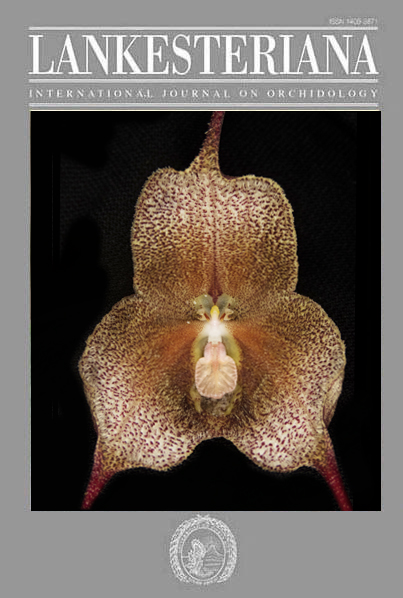<i>Dracula irmelinae</i>, a new species in the subtribe Pleurothallidinae (Orchidaceae) from the Western Andes of Colombia
DOI:
https://doi.org/10.15517/lank.v20i2.41823Abstract
A new species of Dracula (Pleurothallidinae: Orchidaceae) from Colombia is described, honoring Irmelin Indenbirken, mother of the actor and philanthropist Leonardo DiCaprio. D. irmelinae is phenotypically most similar to Dracula verticulosa, but differs in having larger and wider sepals that form a smoothly curved semicircular mentum behind the lip, an indumentum with dark red internal and external maculae and dense long pubescence on the internal sepal surfaces and bases of the tails. The geographic distributions of the two species also differ, with the new species being restricted to a small area in the western Cordillera of Colombia. The conservation status of the new taxon is assessed as Endangered (EN) according to the International Union for Conservation of Nature (IUCN) criteria.
Key words: Colombia, Dracula, endangered species, Pleurothallidinae, Western Andes
Downloads

Downloads
Published
How to Cite
Issue
Section
License
According to the Open Access policy promoted by the University of Costa Rica, all the papers published by Lankesteriana are licensed under the Creative Commons copyright and can be downloaded free of charge. The journal holds copyright and publishing rights under the CC BY-NC-ND 3.0 CR license.
Before the publication of the materials submitted by the author(s) in LANKESTERIANA, the author(s) hereby assign all rights in the article to the Lankester Botanical Garden.




